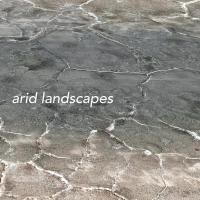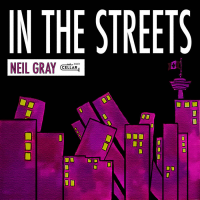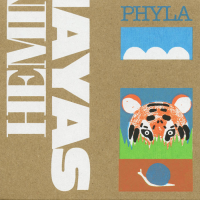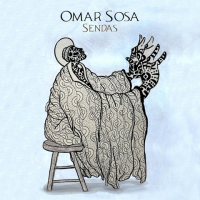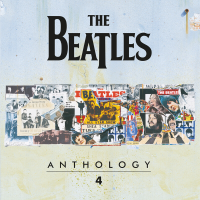Home » Jazz Articles » Extended Analysis » George Duke: George Duke: My Soul - The Complete MPS Fus...
George Duke: George Duke: My Soul - The Complete MPS Fusion Recordings
 George Duke
George Duke My Soul -The Complete MPS Fusion Recordings
MPS/Universal Music Germany
2008
While he's gone on to become a renowned pop producer and, in recent years, has veered towards smooth jazz territory, keyboardist George Duke has, in fact, the credentials, skill and intuition to tackle most anything he chooses. So, while his early days might be considered by some to be more significant in that they were closer to a jazz aesthetic and further from the R&B spirit that has moved him since, the fact is that Duke has always followed his own heart with respect to his musical choices. Few can challenge his navigation of the late Frank Zappa's classic and complex "Inca Roads" on One Size Fits All (Ryko, 1975), breezy Brazilian contributions to Flora Purim's Butterfly Dreams (Milestone, 1974), his blinding yet undeniably funky synth solos on John Scofield's Loud Jazz (Grammavision, 1988) or the greasy groove of "Cobra," on Miles Davis' last significant studio album, Amandla (Warner Bros., 1989).
Equally, while distanced from the jazz sphere, it's hard to deny a talent that has produced successful albums for Natalie Cole, Smokey Robinson, Philip Bailey, Jeffrey Osborne and Gladys Knight. But when Duke first emerged at the age of twenty, releasing his first album on the now legendary MPS label, Presented By the Jazz Workshop of San Francisco (1966), he was a relatively straight-ahead jazzer. Perhaps not the titular Overnight Sensation of Frank Zappa's 1973 hit album, he quickly proved himself a remarkably mature and innovative player just out of his teens on emerging violinist Jean-Luc Ponty's electric post bop The Jean-Luc Ponty Experience with the George Duke Trio and all-Zappa program King Kong, both released in 1970 and later reissued as Cantaloupe Island by Blue Note.
And so, much as is the case today, an American artist got his start on a European label that recognized the talent and gave it the freedom to grow. My Soul—The Complete MPS Fusion Recordings doesn't include Duke's 1966 MPS debut, but it does collect, on four CDs, six releases (seven albums, really, as the first one, 1971's Solus (The Inner Source), was a double album featuring two releases intended to be put out separately—Solus and The Inner Source) that not only document Duke's emergence as a stylistically multifaceted performer, composer and producer of significance but, when listened to chronologically, make his later choices not just understandable, but inevitable.
Solus features the same trio as on The Jean-Luc Ponty Experience with the George Duke Trio—bassist John Heard and drummer Dick Berk—but it's a set of all original material co-composed with his band mates, and is the most straight-ahead session of the box. Still, the up-tempo soul jazz of "Au-Right" is an attention grabbing opener, with Duke's electric piano cleaner than, say that of Chick Corea's on Light as a Feather (Polydor, 1973). And while Corea's interest in Latin music would garner him a lot of attention, most notably for his association with percussionist Airto Moreira and singer Flora Purim—two artists with whom Duke would eventually work—the light bossa of "Love Reborn" demonstrates Duke's early and equal interest in Latin jazz.
The waltz-time "So There You Go" not only illustrates Duke's roots in Bill Evans, but is an opportunity for Heard to stretch. A supple bassist who, as Duke approached fusion more head-on with albums like 1973's Faces in Reflection, was as dexterous as Stanley Clarke, why Heard seemed to disappear from the radar after a run of albums in the 1970s and 1980s is a mystery. Perhaps it's a matter of place and time, but based on his work here and on subsequent Duke discs, he was a bassist who deserved far more than he received.
The trio demonstrates no shortage of swing on the fiery "The Followers," a time/no changes track that's got both Duke's hottest playing of the set and a clever integration of electric and acoustic pianos at a time when most performers were doing an "either/or," the real gem of the session is "Peace," a rubato tone poem that finds Duke a compelling colorist. Near-ambient in its sense of stasis, it's an evocative piece that proves Duke capable of more than mere chops.
By the time The Inner Source was recorded, Duke had been playing with saxophonist Cannonball Adderley for nearly a year, and the solid touring can be heard in Duke's growth as a pianist. With a large array of keyboards and effects and an expanded group, Duke was also growing as a conceptualist. The opening "Nigerian Numberuma" is a solo piano miniature that echoes Africa with its kalimba-like texture, but is equally expansive and exploratory as Duke appears to mine the timbral possibilities of as few notes as possible. "My Soul" begins as a samba for trio, but horns soon broaden it and deliver added punch, with a three-piece section that includes Duke making a rare appearance on trombone.
The dark ballad, "The Inner Source" is a feature for trumpeter Luis Garcia and saxophonist Jerome Richardson, but it's Duke's solo that stands out. Surrounded by a group of pianists making the switch to electric instruments including Chick Corea, Herbie Hancock and Joe Zawinul, Duke's warm and resonant Fender Rhodes is further contradictory evidence to those who felt (and some who still feel) that the introduction of electric keyboards depersonalized the instrument. But while Hancock was pursuing more electronic directions at the time with his Mwandishi band, and Zawinul was exploring freer territory with Weather Report, Duke's allegiance to the tradition was considerably clearer. Electric music this was, but it still swung hard on "Life" and possessed a pop-like but still soulfully jazz complexion on the percussion-rich "Feels So Good."
But there were signs of envelope pushing on "Manya," a solo piece that, with its heavily electronic complexion, mirrored Mwandishi, and "Sweet Bite," a ballad yes, but one that relied as much on Duke's resonant Rhodes and the creation of trilling passages that simply wouldn't have worked on an acoustic instrument. Still, while Duke was experimenting in his own way, and approached the outside with confident shifts in time and tempo ("Always Constant"), the result remained approachable, less abstruse than Weather Report and Mwandishi.
Three years would pass before Duke's next record, 1974's Faces in Reflection, and a lot had happened in the intervening years. Mahavishnu Orchestra and Corea's guitar-centric incarnation of Return to Forever had taken jazz/rock fusion to surprising levels of commercial success, not to mention unheard of decibel levels for jazz. Along with the visceral funk of Hancock's Head Hunters and Weather Report's steady evolution towards groove-centricity and the introduction of world music elements, fusion had become the style de jour, no longer filling clubs, but arenas that were once owned exclusively by rock and roll. Duke continued working with Cannonball Adderley, but his relationship with Frank Zappa, that began in 1970, continued to grow with big-selling records including Waka/Jawaka (Ryko, 1972), Overnight Sensation and Apostrophe (Ryko, 1974). So it's no surprise that Faces in Reflection, returning to a trio format with Heard and drummer Leon "Ndugu" Chancler, was a harder-hitting album, more reflective of the complexities that were imbuing fusion.
An AAJ review of the 2008 Promising Music/MPS single disc reissue of Faces in Reflection says all that needs to be said about the release, but amongst the important changes in Duke's music were a more aggressive rhythmic stance, more challenging charts, busier solo activity (the lithe Heard, in particular, sounding very much like Stanley Clarke on acoustic bass) and a much larger array of keyboards at Duke's disposal.
As virtually every well-known keyboardist began to develop their own voices on synthesizers, clavinets, electric pianos and the application of various effects, Duke's seemingly instinctive command of texture and tone gave him some of the most recognizable and appealing synth sounds of the time. Forced by Zappa into singing, it also turned out that Duke had far more than just a passable singing voice, and he layered wordless vocals effectively on the fiery "The Opening" as well as the greasier funk of "Capricorn." Duke's soul jazz tutelage under Cannonball Adderley's wing served him well, with themes like "Capricorn" and the title track not just taking advantage of that experience, but building on it as well, in particular on "Faces in Reflection No. 1" an example of how a simple ascending pattern can be grist for dynamic growth by textural rather than melodic means.
In many ways, Faces in Reflection is an early fusion masterpiece—the episodic "Psychocomatic Dung" is as powerful and technically impressive as anything coming from RTF or Mahavishnu Orchestra—that never achieved a proper place because it was released on a relatively small German label that simply didn't have the distribution of majors like Columbia and Warner Bros.
For Feel (1974), Duke begins moving further towards the funk and R&B brand of fusion that, perhaps, represented a sign of where he'd ultimately go in subsequent decades. "Funny Funk" is in the same space as Herbie Hancock's Head Hunters (Columbia, 1973), but a significant differentiator is that, while both Hancock and Duke were fine writers whose charts were often more challenging than they sounded, Duke rarely ventured into extended territory. Hancock's "Chameleon" was over fifteen minutes long, while only 11 of My Soul's 64 tracks exceed six minutes; with but two breaking the nine-minute mark. And even when Duke does go long—and there's no shortage of solos throughout the collection—his writing began to include more vocals, pushing the music towards a more song-based approach.
Feel also features a larger cast of characters than Faces in Reflection, with a sextet, still based around the trio of Heard and Ndugu, with the notable addition of Brazilian percussionist Airto Moreira (an ex-Miles Davis alumnus by this time) and his wife, singer Flora Purim, supporting Duke's lead vocals on the simmering "Love"—another first, with an extended distorted guitar solo from "Obdewl'l X" that won't fool anyone in the know: Frank Zappa, playing under an assumed name. Duke was playing with Zappa at this time, and there's no doubt that the late guitarist/composer had an influence on the keyboardist, though it would show up more fully on I Love the Blues, She Heard My Cry (1975). Zappa's fiery approach is even more unmistakable on "Old Slippers," a tune that begins in a relatively easy- going way, but gradually intensifies until it morphs, when Zappa's solo hits, into flat-out fusion with a progressive edge that's somewhere between Mahavishnu Orchestra and Return to Forever territory.
If Corea would bring a fusion aesthetic to Latin music from a Spanish perspective, Duke approached it from a Brazilian outlook, with the center of "The Once Over" an impressive percussion workout for Ndugu and Moreira. The breezy "Yana Aminah" is a feature for Purim, and a song that could easily have fit on her own Butterfly Dreams, with a synth solo from Duke that, again, demonstrates his mastery of tone and texture.
Duke's abilities to orchestrate also continued to evolve with Feel. "Theme From The Opera 'Tzina'" is another layered keyboard solo, Zawinul-esque in its use of analog synths and electric piano to create a rich textural tone poem, but still all Duke. "Statement" is an equally synth-driven symphonic coda to Feel that reprises the theme from its title track, a gentle ballad that features Duke's increasingly confident vocals.
I Love The Blues, She Heard My Cry is an even more ambitious record that expands to a cast of over twenty musicians, including some of Duke's band mates from Zappa's group (percussionist Ruth Underwood, trombonist Tom Fowler, bassist Tom Fowler). Moreira, Purim and Ndugu are back and, if Feel was Duke's first album to use guitar, I Heard the Blues becomes even more guitar-centric, with guest appearances from George Johnson (The Brothers Johnson), Lee Ritenour, Daryl Stuermer (Jean-Luc Ponty) and Johnny "Guitar" Watson (Frank Zappa).
With a broader palette to work from, it's a significant shift for Duke. Even more song and vocal-focused—and funk/R&B focused—it's still a surprisingly experimental album, albeit an unerringly accessible one. George Johnson takes a bluesy solo during the rocking middle vamp of "Look Into Her Eyes," while Duke's synth solo again finds his expertise in creating a broad swatch of color evolving even further. While Corea would create very specific and identifiable synth tones for his solos with Return to Forever and even subsequent albums including The Leprechaun (Polydor, 1976) and The Mad Hatter (Polydor, 1978), in some ways fitting the material to his synth tones, Duke was almost the reverse—finding new tones to suit the material.
The songs are generally shorter, with only "Giant Child Within Us—Ego" more extended, its first third an acoustic piano solo with some additional synth. But when the group kicks in with an energetic pulse, Duke's fiery arpeggios and some Zappa-informed horn lines kick it into high gear. Duke may have been moving gradually to a smoother sound, but he made it clear that he was still not just capable, but interested in more challenging charts. And while the added guests on the album contributed to its greater sonic density, so too was Duke's more thickly layered keyboards.
Duke also throws in a couple of complete career non sequiturs—the head- banging, Hendrixian satire of "Rokkinrowl, I Don't Know" and the title track, a raw and completely straight-ahead blues tune, sung in duet with Watson and featuring his overdubbed and rough-hewn electric guitar. Duke had a personal voice but, perhaps more so than any fusion artist of the day, possessed an encyclopedic musical interest that makes sense of his future career choices, even this early on. Still, I Heard the Blues is, in many ways, the broadest and most adventurous disc of the set.
For 1975's The Aura Will Prevail, Duke returns to a simpler line- up, largely a trio date with Ndugu and bassist Alphonso Johnson, who'd already generated some buzz for his work on Weather Report albums Mysterious Traveller (Columbia, 1974) and Tale Spinnin' (Columbia, 1975). But while the "nobody solos and everybody solos" aesthetic of Weather Report gave the opportunity for the young bassist to stand out, he rarely got the opportunity to solo with as much presence and spotlight as on Aura's up-tempo, Latin-esque "Floop de Loop." In these pre-Jaco Pastorius days, Johnson, along with RTF's Stanley Clarke, was the gold standard for electric bass, and his playing throughout Aura is the perfect combination of rock solid anchor and nimble soloist.
Moreria is back to lend some Brazilian cred to the largely hand percussion- driven "Dawn" and electric bossa "Malibu," which also features some scat-like, wordless vocals from Ndugu, Sylvia St. James, Kathy Woehrle and Gee Janzen that predated guitarist Pat Metheny's introduction of a similar premise with Pat Metheny Group in the 1980s.
Duke revisits "Foosh," first heard on Jean-Luc Ponty's The Jean-Luc Ponty Experience with the George Duke Trio, and while Ponty's version demonstrated Duke's early interest in Latin music, the keyboardist's version on Aura is not only sparer, but becomes a greasier funk track. Duke, in the liner notes, suggests that it was with Aura that the love affair with Brazilian and Latin that began many years back became more dominant. While Latin rhythms underscore the album, so too do his funk and R&B predilections, with the easygoing "Fools" a song that could easily have been transferred, with a larger arrangement, to Earth, Wind & Fire.
While, by this time, Duke was largely performing his own material, Zappa provides "Echidna's Arf," a largely through-composed piece that traverses a lot of territory in its mere three-and-a-half minutes, from the progressive rock trappings of its knotty, high energy intro to a its sparer, pulse-less keyboard-driven orchestration.
With "Uncle Remus" Duke shows his gospel side, and a visceral, backbeat- driven groove while the extremely brief "The Aura" ends the album on a brief Latin note, with Ndugu's congas and Moreira's array of percussion closing out the disc.
Duke's final fusion disc for MPS, 1976's Liberated Fantasies brings back the guitars, and is a strong consolidation of the multifarious styles that converged to create his own unmistakable voice. There's the greasy funk-meets Zappa-esque lyrics of "Don't Be Shy," the medium-tempo pop balladry of "Seeing You," the sound collage of "What The..." that predates sound and vocal sampling and the unshakable instrumental groove of "I C'n Hear That."
But as Duke's career continued to evolve towards his later musical direction, Liberated Fantasies stands a close second to I Heard the Blues's broadly explorative nature. "Back to Where We Never Left" is another of Duke's alternatives to Hancock's Head Hunters, with a similar penchant for layered synth orchestration, but considerably longer-form writing. The Brazilian-tinged "After the Love," featuring David Amaro's (Flora Purim) nylon-string guitar, is an atypical all- acoustic affair, with Duke's acoustic piano, Moreira's percussion wordless vocals making for an organic interlude that leads into another extract from Duke's opera, "Tzina"—like Feel's "Theme from Opera 'Tzina,'" a layered orchestral tone poem
But it's the closer of both Liberated Fantasies and My Soul—The Complete MPS Fusion Recordings that's one of the box set's clear highlights. With wordless vocals navigating a serpentine melody supported by Alphonso Johnson and Ndugu's unshakable groove, it's an up-tempo chance for Duke to show his Latin chops, an ear for synth tones that, at a time when "cheesy" was often the unfortunate order of the day, remain strong and compelling over three decades later. It's also another strong solo vehicle for Johnson who, had Pastorius not come along and so quickly supplanted him, may well have become a greater force (despite his remaining an outstanding player to this day). Daryl Stuermer's edgy solo raises the energy even further, leading into a rare solo for Ndugu and, ultimately, a solo from Moreira that, in its fade-out, is one of the set's few missteps, though it may well have been the time limitations of vinyl that forced the decision.
Four CDs, six albums (seven if you split out Solus / The Inner Source) that represent the kind of artistic freedom to explore that was rare, even at a time when major labels were supporting fusion and progressive rock. That Duke was able to record this prolifically over such a relatively short period of time—the first session was in April, 1971, the final one January, 1976—while he remained busy as a sideman with Cannonball Adderley and Frank Zappa and as an increasingly in-demand session player, gave him the opportunity to evolve at the kind of pace that's difficult to match today. By collecting his early albums into one chronological package with independent liner notes and Duke's own reflections on the albums, My Soul—The Complete MPS Fusion Recordings is a rare opportunity to chart the path of an artist who has, in the ensuing years, become not just a significant performer/composer, but an astute producer as comfortable in the world of pop, soul and R&B as he is more clearly delineated jazz.
Track Listing
CD1: Solus / The Inner Source: Au-Right; Love Reborn; Peace; So There You Go; The Followers; Solus; Nigerian Numberuma; My Soul; The Inner Source; Life; Sometime Ago; Feels So Good; Manya. CD2: Solus / The Inner Source (con't): Sweet Bite; Twenty-five; Always Constant. Faces in Reflection: The Opening; Capricorn; Piano Solo No. 1; Piano Solo No. 2; Psychocomatic Drug; Faces in Reflection No. 1; Maria Tres Filhos; North Beach; Da Somba; Faces in Reflection No. 2; . Feel: Funny Funk; Love; The Once Over. CD3: Feel (con't): Feel; Corea Jobege; Old Slippers; Theme from The Opera "Tzina"; Yana Aminah; Rashid; Statement. I Love the Blues, She Heard My Cry: Chariot; Look Into Her Eyes; Sister Serene; That's What She Said; Mashavu; ROkkinrowl, I Don't Know; Prepare Yourself; Giant Child Within Us--Ego; Someday; I Love the Blues, She Heard My Cry. CD4: The Aura Will Prevail: Dawn; For Love (I Come Your Friend); Foosh; Floop de Loop; Malibu; Fools; Echidna's Arf; Uncle Remus; The Aura. Liberated Fantasies: Don't Be Shy; Seeing You; Back to Where We Never Left; What The...; Tryin' and Cryin'; I C'n Hear That; After the Love; Tzina (Excerpts from Act II Scene II); Liberated Fantasies.
Personnel
George Duke
pianoGeorge Duke: piano (CD1#1-7, CD4#1-9), electric piano (CD1#1-7, C4#1-9), keyboards (CD1#8-13, CD2, CD3, CD4#10-18), trombone (CD1#8-13, CD2#1-3), vocals (CD2#15, CD3#1, CD3#7, CD3#9, CD3#13-17, CD4#10-18), synthesizer bass (CD2#14, CD3#2, CD3#6), synthesizer (CD4#1-9), electric bass (CD4#3-4); John Heard: bass (CD1#1-7, CD2#4-16, CD3#1-7), electric bass (CD1#1-8, CD1#12, CD2#15-16, CD3#1, CD3#3-5, CD3#7); Dick Berk: drums (CD1#1-7, CD1#8, CD1#12), percussion (CD1#1-7); Luis Gasca: flugelhorn (CD1#8, CD1#12), trumpet (CD1#8, CD1#12); Jerome Richardson: flute (CD1#8-9, CD1#12, CD2#3), tenor saxophone (CD1#8-9, CD1#12, CD2#3), soprano saxophone (CD1#8-9, CD1#12, CD2#3); James Leary: bass (CD1#8-13, CD2#1-3); Armando Peraza: congas (CD1#8, CD1#12); Leon "Ndugu" Chancler: drums (CD2#4-13, CD2#16, CD3#8-11, CD3#13-16, CD4), percussion (CD2#16), congas (CD3#15, CD4#1-9), voice (CD3#17, CD4#1-9), roto- toms (CD4#10-18), vocals (CD4#10-18); Obdewl'l X: guitar (CD2#15, CD3#3); Airto Moreira: percussion (CD2#15-16, CD3#9, CD3#11, CD4#1, CD4#5, CD4#15-16, CD4#18); Flora Purim: vocals (CD2#16, CD3#5, CD3#9), voice (CD3#17); Bruce Fowler: trombone (CD3#15); John Wittenberg: violin (CD3#11, CD3#15); George Johnson: guitar (CD3#9, CD3#14, CD4#10); Lee Ritenour: guitar (CD3#8, CD3#13, CD3#15); Daryl Stuermer: guitar (CD3#11, CD4#14, CD4#18); Johnny "Guitar" Watson: guitar (CD3#17), vocals (CD3#17); Byron Miller: guitar (CD3#11), bass (CD3#9-10, CD3#14); Tom Fowler: bass (CD3#8, CD3#13); Emil Richards: percussion (CD3#12), marimba (CD3#11, CD4#15); Ruth Underwood: marimba (CD3#15), percussion (CD3#15), congas (CD3#15); Janet Ferguson Hoff: vocals (CD3#13, CD4#11); Amanda B. Recordwether: voice (CD3#13); Debra Fay: voice (CD3#17); Pat Norris: voice (CD3#17); Donna Correa: voice (CD3#17); Larry Robinson: voice (CD3#17); Roger Dollarhide: voice (CD3#17); Alphonso "Slim" Johnson: electric bass (CD4#1-2, CD4#5- 9); Sylvia St. James: vocals (CD4#5); Kathy Woerhle: vocals (CD4#5); Gee Janzen: vocals (CD4#5); David Amaro: guitar (CD4#16); Al "Embamba" Johnson: bass (CD4#10-18); Napoleon Murphy Brock: vocals (CD4#11, CD4#14, CD4#18); Bonnie Bowden Amaro: vocals (CD4#16, CD4#18); Rashid Duke: vocals (CD4#13); Ruth K. Underwood: vocals (CD4#13).
Album information
Title: George Duke: My Soul - The Complete MPS Fusion Recordings | Year Released: 2008 | Record Label: MPS
Tags
PREVIOUS / NEXT
Support All About Jazz
 All About Jazz has been a pillar of jazz since 1995, championing it as an art form and, more importantly, supporting the musicians who make it. Our enduring commitment has made "AAJ" one of the most culturally important websites of its kind, read by hundreds of thousands of fans, musicians and industry figures every month.
All About Jazz has been a pillar of jazz since 1995, championing it as an art form and, more importantly, supporting the musicians who make it. Our enduring commitment has made "AAJ" one of the most culturally important websites of its kind, read by hundreds of thousands of fans, musicians and industry figures every month.














